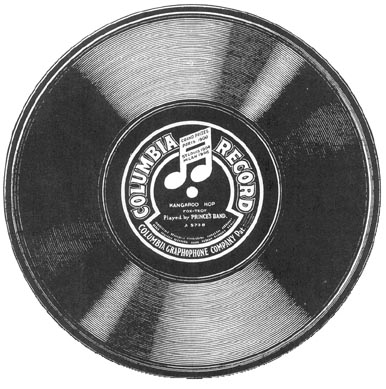Ok!!
Enough bashing. I think I have sufficiently vented about my pet peeves that I hear over and over again in the popular songs of today. I think now we should turn to dissecting the creature that keeps the music industry running. Biological analogies aside, I am of course referring to “The Song.”
If we were to turn on the radio at any station at any time, grab whatever song is playing, shove it in a bag with some air holes, bring it back to our rooms, duct tape it onto a table, and finally shine the lights on it, here is what you would probably see:
Before any dissecting is done, before we really get our hands dirty, we might notice that the length of our particular specimen (whether or not he came from a Country, Hip-Hop, Rock, or Alternative radio station) is approximately 3-4 minutes in length. This came to be solely because of technological limitations in the past that do not exist today. At the turn of the 20th century, after Edison had invented his phonograph, the popular medium for recording and distributing songs was the analog record. They are like CD’s but bigger…
…
Yea, so anyway, early records like the popular 78 rpm records could only store about 3-5 minutes of sound. Thus, songwriters (like the famous Tin Pan Alley songwriters) kept cranking out 3-4 minute “hit” songs. Any longer and you risked having to use to records for one song. And who wants to have to get up and change records during the middle of a song? As a side note, Led Zeppelin almost made 7:55 the new 3 minutes, as this length of their hit single “Stairway to Heaven” proved to be the perfect amount of time for a radio DJ to leave and have a cigarette. Some music writers have even said that this may be the reason why the song got such extensive air play and why the song became a hit in the first place. There exist quite a few interesting tidbits about this song including its length and radio play as mentioned, as well as accusations of plagiarism and hidden backwards lyrics. Check it out when ya got the time=> Stairway to Heaven
Now we whip out the scalpel. Once again, the innards of a typical song are usually the same across the many different genres. Here are the organs of a song, presented in their usual order of appearance:
- Intro
- Verse 1
- Pre Chorus
- Chorus
- Verse 2
- Pre Chorus
- Chorus
- Solo/Bridge
- Chorus
- Outro (optional)
And there you have it. To many, writing an effective “hit”song just means writing and implementing these parts to make the whole. Over the next few posts, I’ll examine each of these parts (Intro, Verse, Chorus, Solo/Bridge, and Outro) in order, and discuss how songwriters optimize their effectiveness in doing whatever it is they are supposed to do. For my next post, let’s start at the beginning and talk about the “Intro,” the “legs” of the song that give it a foundation off which to work. See you next week.
(Sorry no playlist this week)




